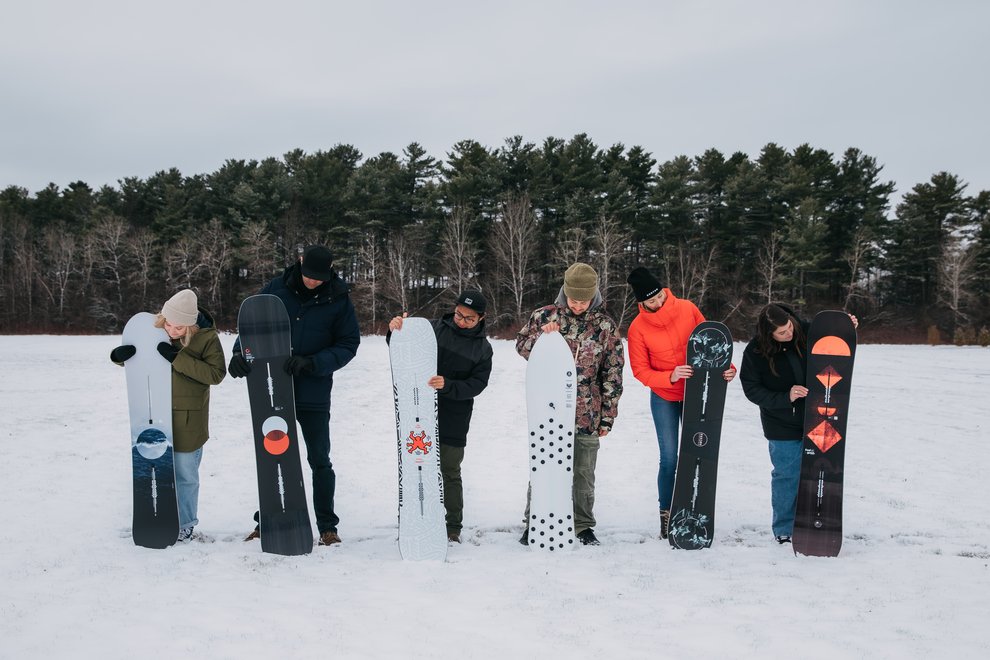How To Size Your Snowboard
Check out this Burton Blog post about how to size your snowboard
Myth: If you stand behind your snowboard, the vertical height of your board should land somewhere between your nose and your chin.
Busted: This information can turn out to be true, but we’re lacking some major details. These days, boards, boots and bindings boast some seriously advanced technologies, but here are some things your snowboard will not do: call you on your birthday, help you move into a third level apartment, and know how tall you are. However, your snowboard can tell your weight and your boot length, so that’s what we consider when determining your board size.

Weight.
Each snowboard size comes with recommended weight minimums and maximums, usually listed on the board’s sticker or in its product info. Within the range identified, the board should perform as intended. Note: this range is a suggestion, and if you find yourself outside of the range, it’s okay. Typically, if you’re under the weight range, the board might be a bit stiffer. Conversely if you’re over the weight range, your deck might ride a little softer.
Boot Size.
More than a snowboard’s length, you need to consider the waist width. Your boot size designates your binding size, and the relationship between your binding and board determines edge-to-edge control and toe drag. If your board has a larger waist width than you need, you’ll have a harder time transitioning from edge to edge and controlling your turns. If your board’s waist width is too small, you run the risk of dragging your toes or heels against the snow in deeper turns.
Just like choosing snowboard boots, you should always consider your type of riding before selecting a size. Deep powder riders might enjoy riding something a bit longer to help with stability and float. Those of us into rails and boxes could benefit from something bit smaller for enhanced maneuverability.
Your weight and boot size are the two critical components for finding the right size snowboard, but remember: just like snowboarding, your board size is a personal preference. Use this article as a jumping off point and do a bit more research to find out what’s best for your weight, boot size, and style of riding.
 NZD
NZD
